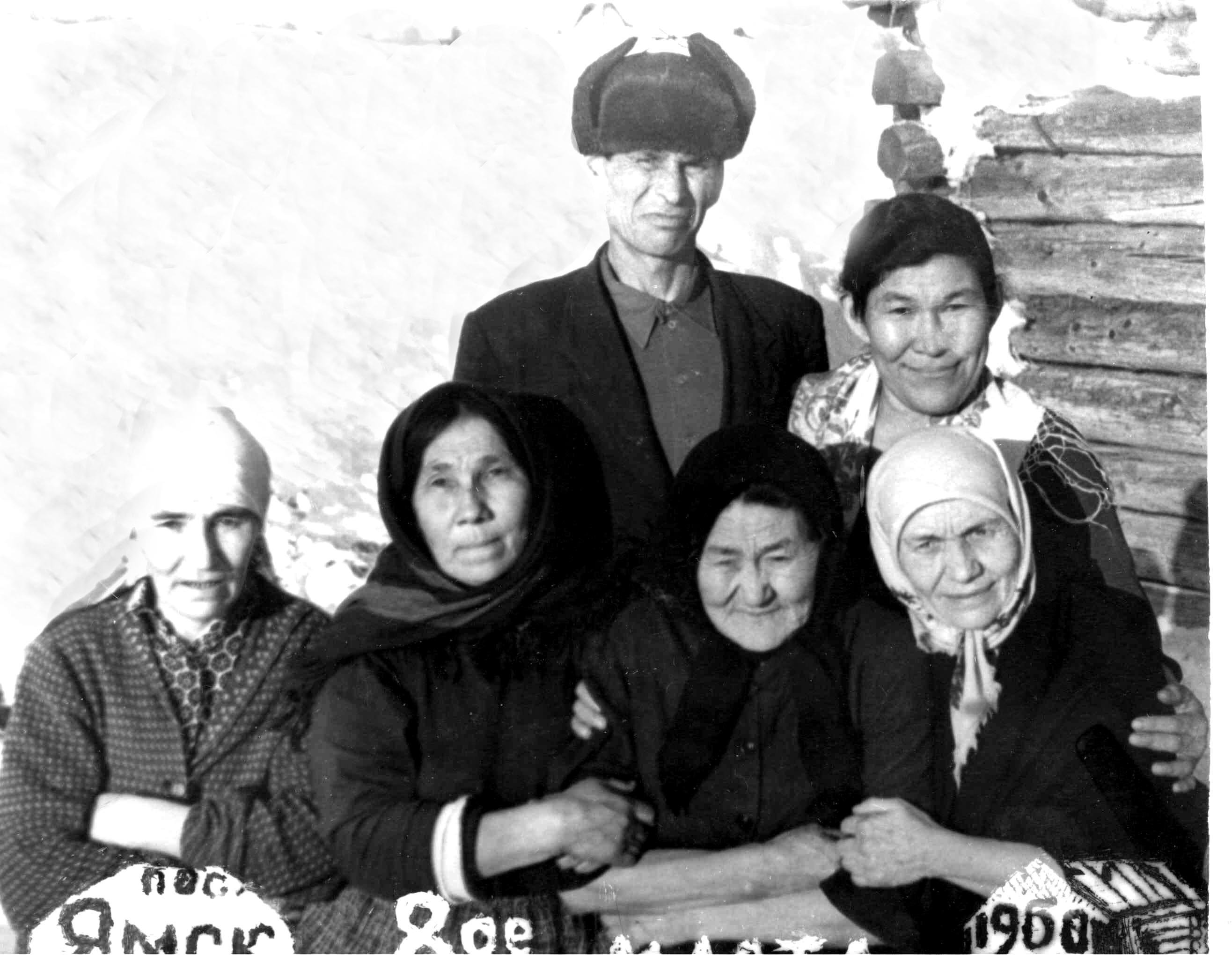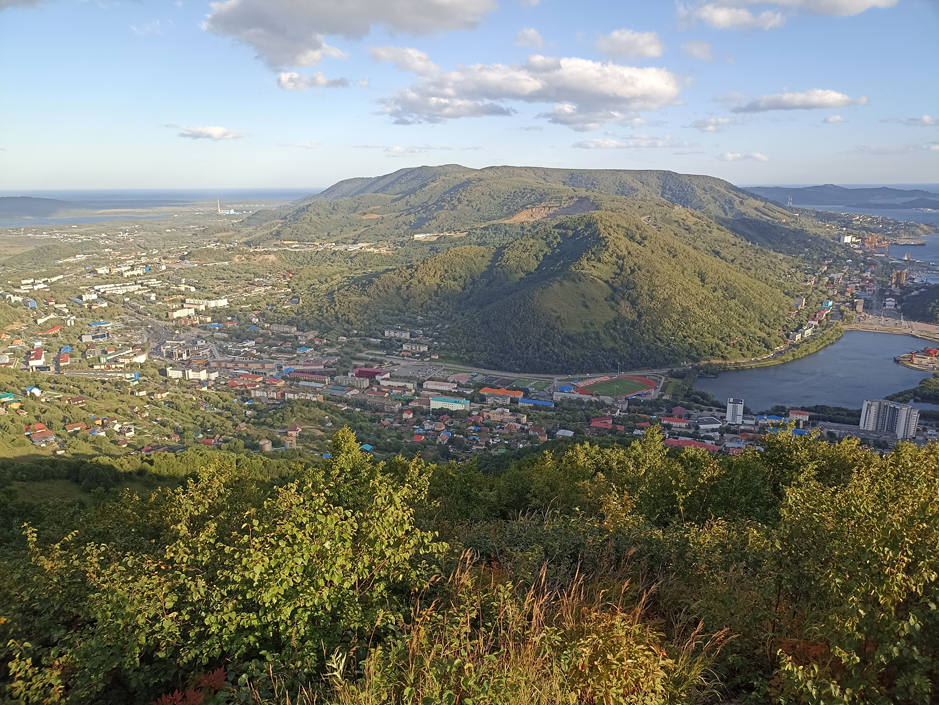General information
The Kamchadals are a people of mixed ethnic origin living on the Kamchatka Peninsula (Kamchatka Territory) and the northeastern coast of the Sea of Okhotsk (Magadan region). Initially, the term
Kamchadals
referred to the indigenous small-numbered people who lived in Kamchatka before the arrival of the Russians (endonym
Itelmens
). Gradually, in historical and ethnographic literature, the term
Kamchadals
came to mean the most Russified Kamchatka aborigines, who entered into marriages with Russian Cossacks and peasants in the 18th-19th centuries. At the same time, the sedentary aborigines, who retained their language and traditional ethnic appearance, began to be referred to as
Itelmens
. By analogy with the Russified descendants of the
Itelmens
, the term
Kamchadals
also began to cover the old-time Russian-speaking dwellers of the northeastern coast of the Sea of Okhotsk, who were descendants of the mixed marriages of the Russian settlers with the Koryaks, Evens and Yakuts.
The total number of Kamchadals, according to the 2020 All-Russian Population Census, is 1,564 people (718 men and 846 women).


In Kamchatka, permanent Russian settlements began to form in the 18th century, after the founding of Verkhnekamchatsky, Nizhnekamchatsky, and Bolsheretsky forts (
ostrogs
) inhabited by the Cossacks and their descendants, whereas such villages as Milkovo and Klyuchi were populated exclusively by peasants. “Cossacks, industrialists, free people... readily came into contact with the northern people, settled among them, married their women” (Patkanov, 1911: 178). During the first 40 years of development of the Peninsula, the size of the indigenous sedentary population decreased by at least a third or even half; there was a significant Itelmen depopulation, which subsequently contributed to their convergence with the Russians. In the middle of the 18th century, there were seven Russian villages in Kamchatka: five forts (Tigil, Bolsheretsk, Petropavlovsk, Verkhnekamchatsk, Nizhnekamchatsk) and two large peasant villages: Milkovo and Klyuchi (Murashko, 2010: 205).


The Itelmen-Russian miscegenation in Kamchatka was so extensive that a unique ethnic group of Kamchatka Kamchadals formed. By the beginning of the 19th century, it amounted, according to researchers, to over 1.5 thousand people, and by the end of the century went up to over 4.3 thousand people. Currently, Kamchadals live in the Elizovsky, Ust-Bolsheretsky, Milkovsky, Ust-Kamchatsky, Sobolevsky, Tigilsky, and Penzhinsky districts of the Kamchatka Territory, as well as in the city of Petropavlovsk-Kamchatsky.


The self-name of the indigenous inhabitants of Kamchatka was
Itelmen
, which means “resident” (Krasheninnikov, 1949: 362; Steller, 199: 24). Many researchers believe the ethnonym
Kamchadal
to be an external one, introduced by the Cossacks, who used it to refer to the residents. There are two main theories for the origin of this ethnonym. According to one, it comes from the name of a certain river (Steller, 1999: 23). The other opinion is that it was originally the word
khonchala
(
konchalo
), as this is how the indigenous inhabitants of Kamchatka used to be called by their Koryak neighbors (Krasheninnikov, 1949: 362; Stepanov, 1949: 19). Other researchers consider the ethnonym Kamchadal to be the self-name of the natives of Kamchatka, which was adapted to Russian pronunciation (Orlova, 1975: 128). The Russified inhabitants of the Peninsula also called themselves by their native places of residence: the villages of Tigil, Bolsheretsk, Milkovo, Klyuchi, and Nizhnekamchatsk.
The Kamchadals also live in the northeastern part of the Okhotsk coast, but to distinguish them from the people of Kamchatka of the same name, it is customary to call them
Okhotsk
Kamchadals
. The formation of the Okhotsk Kamchadals took place in the villages of Tauisk, Arman, Ola, Yamsk, Nayakhan, and Gizhiga, founded in the 17th-18th centuries. The socio-political and economic integration of the northeastern territories into the Russian Empire caused the construction and development of these settlements. The Russian settlers and the sedentary indigenous population were connected by a common territory of residence and shared economic activities, which entailed close interaction and created the basis for intensive assimilation. The predominant settlers on the Okhotsk coast were the Cossacks. The local Okhotsk Kamchadals included sedentary Koryaks, sedentary and nomadic Tungus (Evens), and Yakuts. By the end of the 19th century, the number of Okhotsk Kamchadals was approximately 1.3 thousand people. Currently, Okhotsk Kamchadals live in the Olsky and North-Evensky districts of the Magadan region, as well as in the city of Magadan.

The term Kamchadal as a designation of the ethnic group of mixed origin about the inhabitants of the Magadan region, came into use at the beginning of the 20th century. At first, this ethnonym was used unofficially, but in the 1920s it appeared in official documents (Gurvich, 1966: 259). The self-names of the Okhotsk Kamchadals were most often associated with their place of residence. Thus, the Russian-speaking old-time dwellers of Gizhiga called themselves “Gizhiginsky”, the residents of the other villages were “Olsky”, “Armansky”, “Yamsky”, “Tauisky” (Khakhovskaya, 2003: 239). In the 1920s the formation of a common ethnic identity of the Okhotsk old-time dwellers began, and they came to identify themselves as the
Kamchadals
. By the 1940s, the variety of terms designating the Russian-speaking old-time dwellers had disappeared, replaced by the general term Kamchadals. At the same time, they began to be officially referred to as “Russians”. This process reflected the active mixing of the Okhotsk Kamchadals with the Russian settlers of the Soviet era.





























































